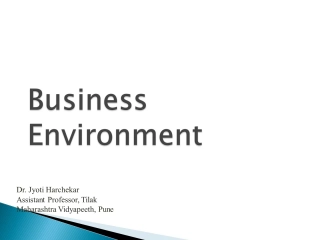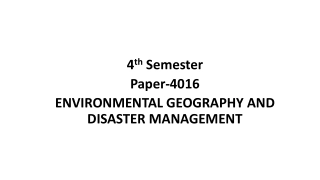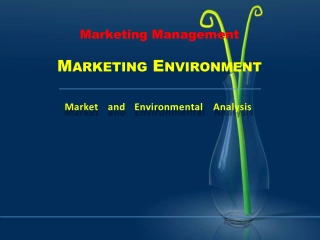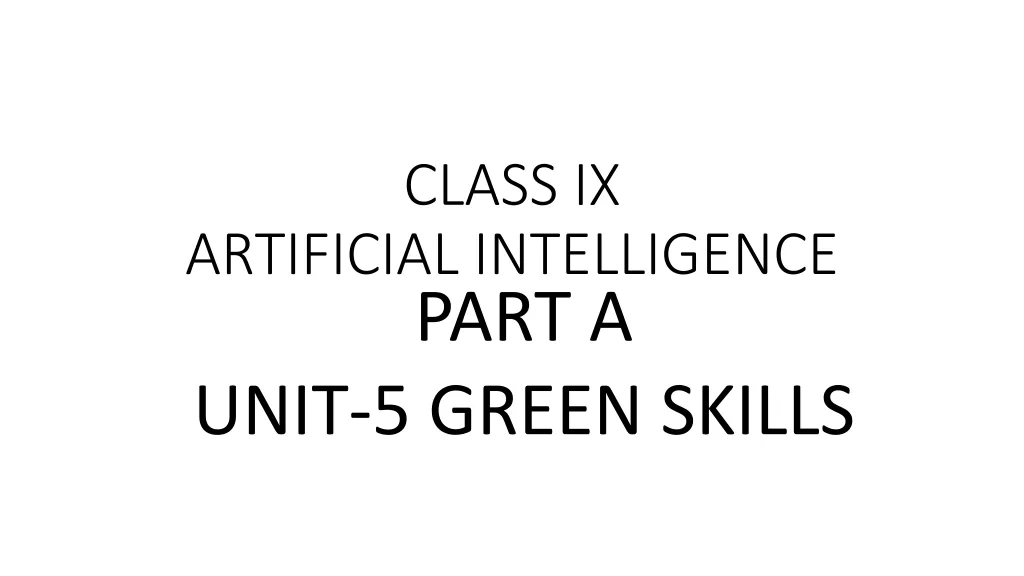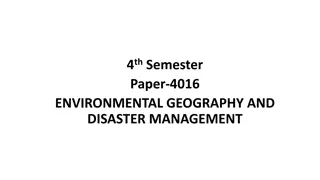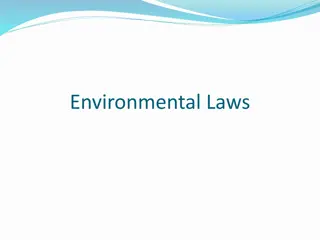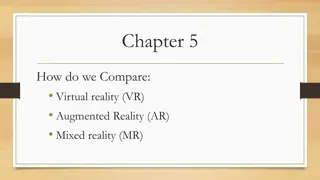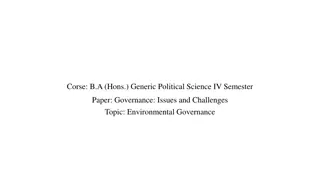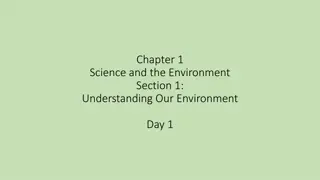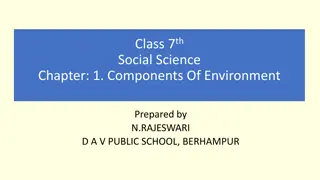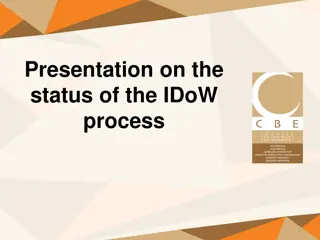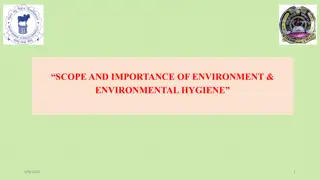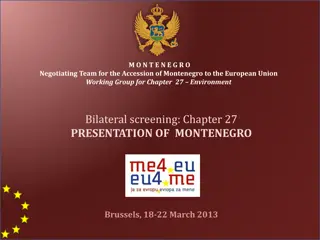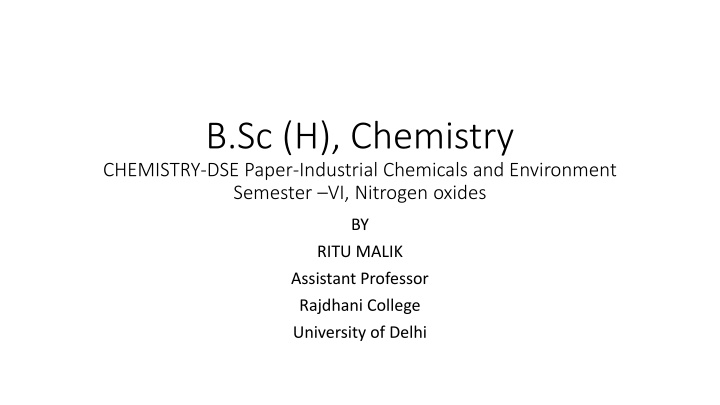
Nitrogen Oxides and Their Impact on the Environment
This text explores the sources, formation, and effects of nitrogen oxides, focusing on nitric oxide and nitrogen dioxide. It delves into natural and anthropogenic sources, highlighting the role of high temperatures in emission. The process of nitrogen oxide formation in the atmosphere, its oxidation, and conversion to nitric acid are explained. The text also discusses the formation of ammonium nitrate aerosols and photochemical smog due to nitrogen oxides. Additionally, it covers the primary and secondary effects of nitrogen oxides on humans, vegetation, and the environment. Finally, the estimation of nitrogen oxides, primarily nitrogen dioxide, through wet chemical methods is outlined.
Download Presentation

Please find below an Image/Link to download the presentation.
The content on the website is provided AS IS for your information and personal use only. It may not be sold, licensed, or shared on other websites without obtaining consent from the author. If you encounter any issues during the download, it is possible that the publisher has removed the file from their server.
You are allowed to download the files provided on this website for personal or commercial use, subject to the condition that they are used lawfully. All files are the property of their respective owners.
The content on the website is provided AS IS for your information and personal use only. It may not be sold, licensed, or shared on other websites without obtaining consent from the author.
E N D
Presentation Transcript
B.Sc (H), Chemistry CHEMISTRY-DSE Paper-Industrial Chemicals and Environment Semester VI, Nitrogen oxides BY RITU MALIK Assistant Professor Rajdhani College University of Delhi
Sources of Nitrogen Oxides ( ???) Natural sources: Lightning, thunderstorms (when temperature is high ) Produced by soil microorganisms Anthropogenic Sources: Fossil Fuel based power plants Automobiles (gasoline and diesel engines ) High temperature is required for ???emission
Pollution due to Nitrogen Oxides (???) Formation of Nitric Oxide and oxidation of nitric oxide to nitrogen dioxide Nitric oxide is formed by the reaction between nitrogen and oxygen only at high temperature in stratosphere. ?2+ ?2 2NO Atmospheric oxygen and stratospheric ozone can oxidize nitric oxide to nitrogen dioxide 2NO + ?2 2??2 NO + ?3 ??2+ ?2 Nitric oxide (NO) is also formed by the photolysis of nitrous oxide (?2?) in the stratosphere, formed in soil by the action of bacteria on nitrate based fertilizers. (Nitrous oxide remains inert in troposphere). (1) (2)
Continued. ?2? + h NO + N ?2? + h ?2+ O ?2? + O 2NO Nitric oxide (NO), is than oxidized to nitrogen dioxide.(Equation 1 &2) Formation of Nitric Acid Nitrogen dioxide reacts with water vapors to form nitric acid 3??2+ ?2? ???3+ NO ?2?5+ ?2O ???3
Continued. Formation of Ammonium nitrate aerosols: ??3+ ???3 ??4??3 Formation of photochemical Smog: Nitrogen oxides react with hydrocarbons in the presence of sunlight to form photochemical smog.
Effects of Nitrogen Oxides Primary Effects 1. Humans: Inflammation of lungs followed by accumulation of fluid in lungs (edema), causing death. 2. Vegetation: Suppressed plant growth, chlorosis, low crop yield. Secondary Effects 1. Acid Rain 2. Photochemical Smog 3. Aerosols
Estimation of Nitrogen Oxides Estimation of Nitrogen Oxides Estimation of Nitrogen oxides is basically the estimation of Nitrogen dioxide as other nitrogen oxides finally gets converted to nitrogen dioxide only. 1. Wet Chemical Method based on formation of an azo dye: The sample of air is passed through a solution of sodium hydroxide for a duration of 24 h. Nitrogen dioxide present gets converted into sodium nitrate and sodium nitrite. 2??2+ 2NaOH ????2+ ????3+ ?2? The products formed are added to the mixture of sulfanilic acid, hydrogen peroxide, hydrochloric acid and N(1-naphthyl)-ethylenediamine dihydrochloride.
Continued. Sodium nitrite diazotizes with sulfanilic acid to form salt. ????2+ 2HCl + NaCl + 2?2O +
Continued The diazonium salt couples with N(1-naphthyl)-ethylenediamine dihydrochloride. The coupled compound shows absorption at 546nm. The concentration is determined by Lambert-Beer law. One mole of coupled salt is equivalent to one mole of sodium nitrite, which corresponds to one mole of nitrogen dioxide.
Continued 2. Gas-phase Chemiluminescence NO + ?3 ??2 Ozone reacts with nitric oxide to produce electronically excited nitrogen dioxide. The excited nitrogen dioxide returns back to ground state and emits out light energy in 600-3000 nm range. This light is measured by photomultiplier. The intensity of emitted light is proportional to the concentration of NO. + ?2
Control Procedures of Nitrogen Oxides There are two approaches to control the emission of nitrogen oxides: A) Modifications of conditions of combustion to prevent the formation of ???: It is usually done by controlling three conditions : 1. low temperatures 2. low oxygen concentrations 3. less time of exposure to flame. Low excess air combustion of fossil fuels is effective, but at the same time it also leads to incomplete combustion of fuel and emission of hydrocarbons, soot and CO. So, two stage combustion is designed to overcome these problems: At stage one, fuel is combusted at high temperature with substoichiometric amount of air (less oxygen) At stage two, fuel is burnt at relatively low temperature. Two stage combustion process has led to about 90% reduction in ???emissions.
Continued. B) Treatment of the flue gas to remove ???: It involves catalytic decomposition of nitrogen oxides, oxidation of NO to ??2and ?2?3, that can be easily absorbed by a base. C) An upcoming approach to control ???emissions are biofilters. The microorganisms degrade the pollutants to produce ?2.
Control Procedures of Nitrogen Oxides S.No. Control Method Description 1. Reducing peak temperature By avoiding stoichiometric ratio as the exact ratio of chemicals produce high temperature that produce high amounts of nitrogen oxides. Technologies used are: a) Flue Gas Recirculation (FGR) b) Natural Gas Reburning c) Low NOx Burners (LNB) d) Combustion Optimization e) Burners Out Of Service (BOOS) f) Less Excess Air (LEA) g) Inject Water or Steam h) Over Fire Air (OFA) i) Air Staging j) Reduced Air Preheat k) Catalytic Combustion 2. Reducing residence time at peak temperature By restricting the flame to Inject Air or Fuel or Steam 3. Chemical reduction of NOx a) By Selective Catalytic Reduction(SCR) uses ammonia for
Continued NOx-out Technology: This technology uses aqueous solution of urea remove oxides of nitrogen at a number of points in combustion system. ??2????2+ ?? + ??2 2?2+ ??2+ 2?2O Ammonia is also produced in little amounts and is removed by scrubbing it by water. About 80% of nitrogen oxides are removed by this technology. Selective Reduction Technology: This technology removes the oxides of nitrogen from fuel gases by treating it with ammonia in the presence of catalyst. The catalysts employed for reduction are metallic Platinum (temperature 500-600K) or Titanium oxide (temperature 600-700K). The disadvantage of this technology is that if used over longer periods, ammonia tends to poison the catalyst.
Control of nitrogen oxides pollution from vehicular emission Catalytic converters There are 2 types of catalytic converters Two way Catalytic Converter This converter removes hydrocarbons and carbon monoxide from the vehicular exhaust in the presence of platinum and Palladium as catalyst supported on a ceramic or metal honeycomb bed at a temperature of about 700 Kelvin and oxidises carbon monoxide to carbon dioxide and hydrocarbons to carbon dioxide and water. ???????? 2CO + ?2 2??2 ???????? HC + ?2 (Hydrocarbons) C?2+ ?2O
Continued . Three way Catalytic Converter: This converter removes carbon monoxide, hydrocarbons and nitrogen oxides from the vehicular emission. It is an example of oxidation reduction catalysis where vehicular exhaust is allowed to pass through rhodium platinum catalyst first where nitrogen oxides are reduced to nitrogen; And then through platinum palladium catalyst where carbon monoxide and hydrocarbons are oxidized too carbon dioxide and water. 2NO + 2CO Partial reduction to nitrous oxide also occurs 2NO + CO Nitrous oxide decomposes easily ?2O 2?2+ ?2 Nitrogen oxides also interact with hydrocarbons ???+ HC ???????? ?2+ 2??2 ???????? ?2O + ??2 ???????? ???????? ?2+ ??2+ ?2O
THANK YOU Ritu Malik Assistant Professor Rajdhani College

